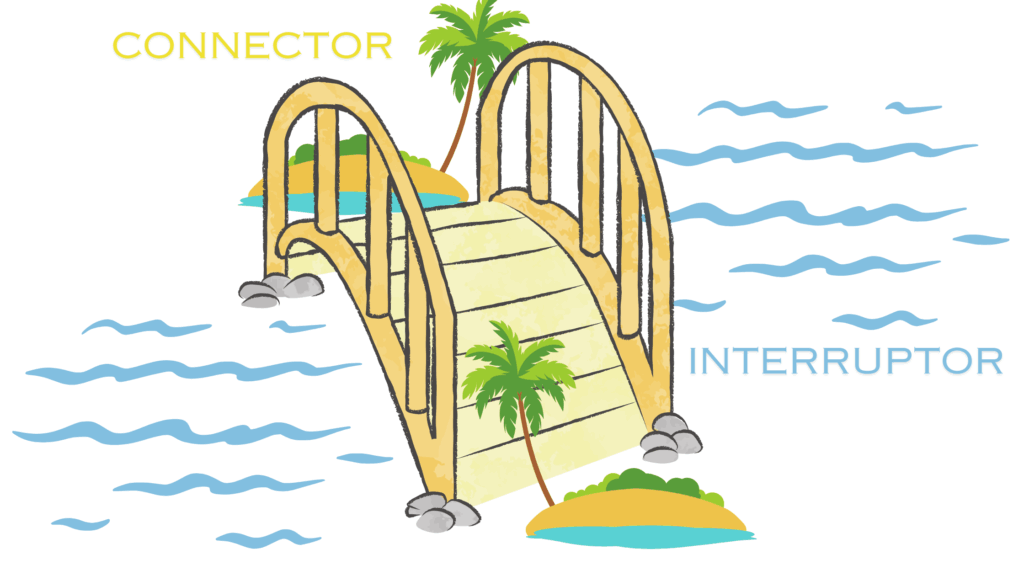
Due to a special request made by an educator who attended our Summer Pathfinders course this August, this post is about bridges and how they work within a paper circuit. I’ll also be using Circuit Sketcher (our NEW Digital Design Software) to demonstrate a couple of examples.
If you spend enough time experimenting with paper circuits, you are bound to have a situation arise that requires you to create a bridge; bridges are used to prevent short circuits.
Short circuits can occur when two pieces of conductive material are not adequately joined together, or when they are connected when they should not be.
Like the word suggests, a bridge may cross over or avoid some things (like a footpath over water), while connecting others (such as two different parts of a tropical island).
The same is the case with electrical bridges, which may be either connectors or disruptors within a circuit.
Bridges as Connectors
A bridge is created whenever you intentionally connect two branches of a circuit together. An example of this type of bridge may be observed in this switch example.
Notice how this circuit has several different branches? Some are connected to the positive side of the battery while others are connected to the negative side through a series of switches.
These types of bridges are created by making a solid physical and electrical connection between two pieces of conductive material that share the same polarity. An example of this type of connective bridging would be using a Conductive Fabric Tape Patch to repair a crack in a piece of copper tape.
Bridges as Interuptors
A second type of bridge serves as a protective barrier that allows electricity to be safely carried over or through an area that shouldn’t be connected. An example of this type of bridge may be observed in this switch example.
Notice how the negative leads of this circuit cross over other negative leads in order for the switches to connect with different lights? Without adding bridges, however, all of the LEDs would be connected together whenever any one of the three switches is pressed.
To prevent unintended connections, these types of bridges are created by adding an insulator between two electrical traces. While insulating bridges are not always required when crossing two traces that share the same polarity (as is the case with this circuit) they are useful for preventing unwanted connections (a type of short circuit).
In this example, bridges are used to interrupt the flow of electrons in order for three folding switches to work correctly. Scotch tape, washi tape, and even scraps of paper make excellent insulators for building bridges.
Learn More
You can learn more about Circuit Sketcher, in general, by visiting Try Circuit Sketcher: Design Software for Paper Circuits.
